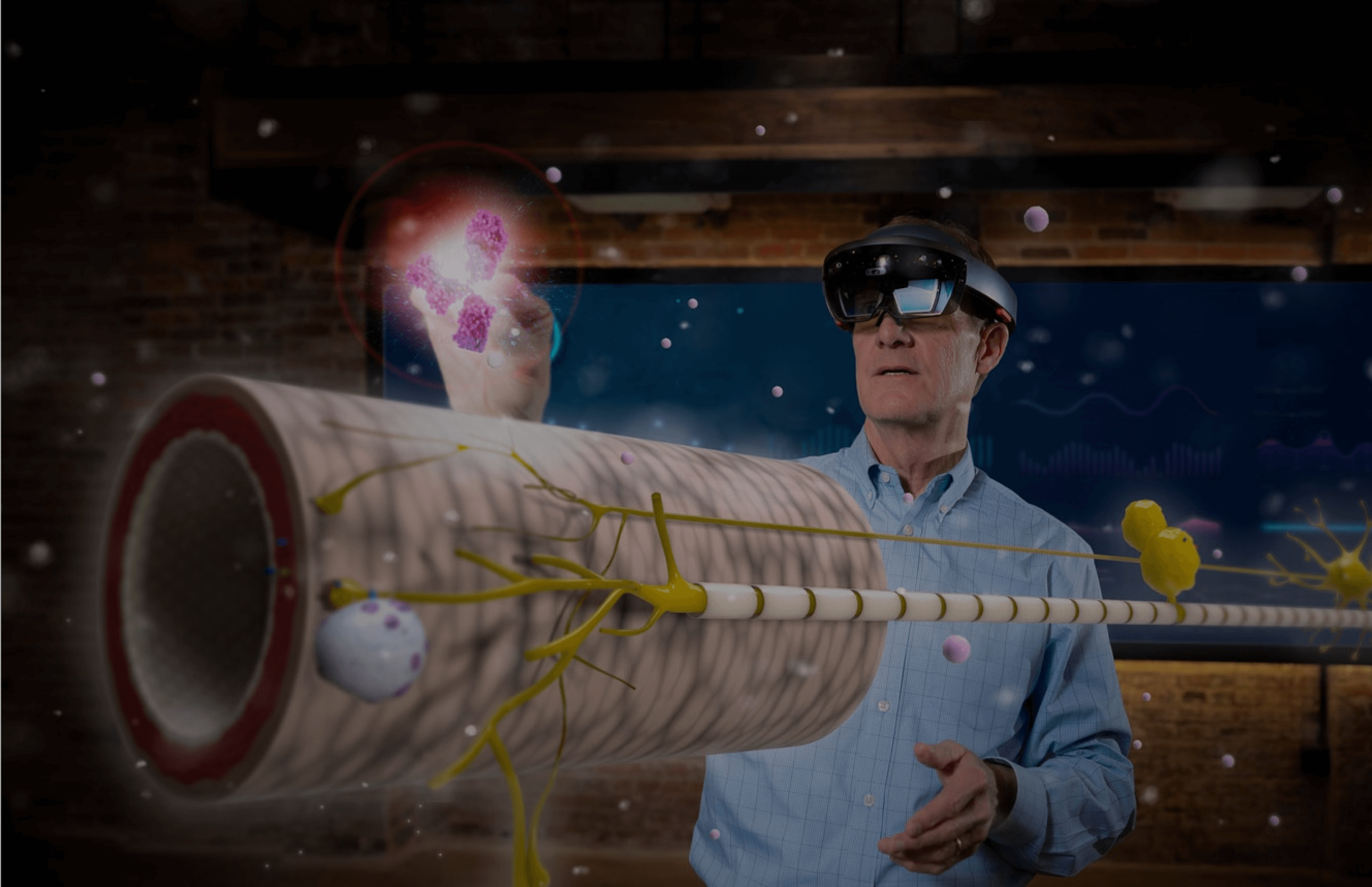
Seeing (in 3D) is believing
Challenge
The challenge was clear, yet formidable: Create an extensive collection of innovative medical education materials that could be used in live guided sessions, as well as self-guided virtual courses on medical education sites.
Luckily, we have a strong executional partnership with VectorForm, a development shop that was instrumental in helping us bring our vision to life. In fact, it was brought to life in a way that was not only engaging but actually increased learning. One learner stated, “The HoloLens was extremely effective in helping me visualize the MOA. Which will help me to retain the information.”
Solution
We started from a place of technical innovation. We knew the Microsoft HoloLens held great promise for medical education because of its ability to truly immerse learners in the chosen material. So, we set out to create reusable frameworks for the HoloLens, mobile devices with built-in AR capabilities (like iOS and Android phones and tablets), and interactive web modules that could be embedded into medical education sites. Once built, we expanded the subject matter, initially developed only for migraine, and moved into rheumatoid arthritis and psoriatic arthritis, as well.
Results
The results have been audible. Literally. When learners see a mechanism of action being manipulated in real time, larger than life on stage, they really lean in and absorb the content. Online learners can also access the same content firsthand through apps on the Android and iOS app stores and through interactive web modules.
One learner said, “Great program. I like that the setting was more interactive than didactic.”
And the numbers show similar results, with 90% saying the HoloLens helped make respondents feel more confident in developing treatment plans. Another 64% said they would make changes to their daily practice as a result. In addition, the program was awarded the ACEHP Pioneer Award for Breaking New Ground in Medical Education.





